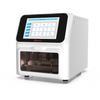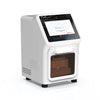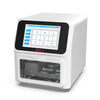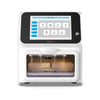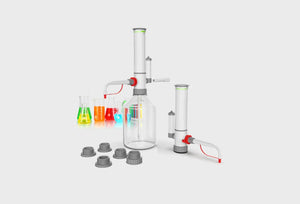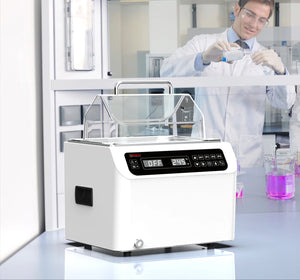Standard pipettes (i.e., analog micro-channel micro pipettes) are ubiquitous laboratory instruments. As such, pipetting is an essential skill necessary for good laboratory practice. However, they are much more complex than their simple exterior suggests.
When used correctly, pipettes provide highly accurate and precise measurements. But mechanical failure and user error make pipettes the most abundant source of laboratory inaccuracies and imprecision. Internal mechanical/operational failures (i.e., malfunction of the device’s construction) are often called “silent failures” because they are rarely noticeable to users. To minimize pipetting errors, you should know how a modern pipette works.
- Most pipettes are air displacement pipettes that work through “positive displacement” meaning that the plunger pushes out the air according to the set volume.
- Depressing the plunger drives the inner piston upwards, leaving a vacant space where the piston used to be. This creates a vacuum that allows space for the liquid to move into the tip.
While mechanical failures often contribute to pipetting inaccuracy, user error is by far the most common source of problems. Luckily, user errors are easy to fix if you follow these 10 pipetting tips (pun intended):
-
Pre-wet the pipette tip before taking up your sample!
- The inside of a dry pipette tip has incredibly low humidity, which makes sample evaporation in the tip more likely.
- Pre-wetting the tip increases internal humidity and minimizes evaporation.
-
Make sure the equipment and reagents are at temperature equilibrium.
- All samples, reagents, and equipment should equilibrate to ambient temperature prior to use. Suitable temperature for pipetting is 21.5°C ± 1°C
- Remember, micro-pipettes work by air displacement, which depends on air pressure, relative humidity, and vapor pressure. All these factors are temperature sensitive.
-
Minimize handling the pipette and tips when not in use.
- Body heat transmitted during use can disrupt the equilibrium of the temperature of the device and change the volume of liquid.
-
Use the correct pipette and pipette tips
- Avoid setting the pipette volume to less than 10% of its maximum volume.
- Use tips compatible with your pipette and form a tight seal around the base.
-
Immerse the pipette tip well below the meniscus
- Tips should be immersed 2-5mm below the meniscus of the liquid.
- Be sure to keep the immersed tip away from the container's walls and bottom.
-
Double check your pipette tip before dispensing the liquid
- Beware of extra liquid clinging to the outer surface of the tip.
- Check for bubbles in the tip. Air bubbles can reduce the sample volume within the tip. If you have a lot of bubbles, ensure that you have sufficient volume for proper tip submersion.
-
Use standard (aka “forward”) pipetting
- For most liquids, forward pipetting gives better precision and accuracy. Simply depress the plunger to the first stop when aspirating.
- For viscous liquids, you may need to use “reverse” pipetting. Reverse pipetting requires fully depressing the plunger past the first stop when aspirating.
-
Pause for a moment after aspiration
- Before removing the tip, pause for a second or two to allow the liquid in the tip to settle (it will bounce when the plunger stops moving).
-
Lift the pipette tip straight out of the liquid
- Be careful not to touch the container's surface when removing the pipette. Disrupting the surface tension can cause liquid to leak out of the tip if the angle changes.
-
Be consistent in plunger speed and pressure.
- Depress and release the plunger smoothly. Uneven or rapid plunger release can increase liquid bouncing after aspiration or cause bubbles and lead to sample loss. This is particularly important if using filter tips as the filter can absorb the bouncing liquid.
- Pipettes are precision devices that provide the best results when used with care.
Follow these ten guidelines to minimize user error when pipetting. But remember to regularly maintain and calibrate your instruments to help prevent mechanical errors.
References
Epstein, David & Tebbett, Ian & Boyd, Shannon. Eliminating Sources of Pipetting Error in the Forensic Laboratory. FBI: Forensic Science Communications. 2003.
Pushparaj PN. Revisiting the Micropipetting Techniques in Biomedical Sciences: A Fundamental Prerequisite in Good Laboratory Practice. Bioinformation. 2020.

